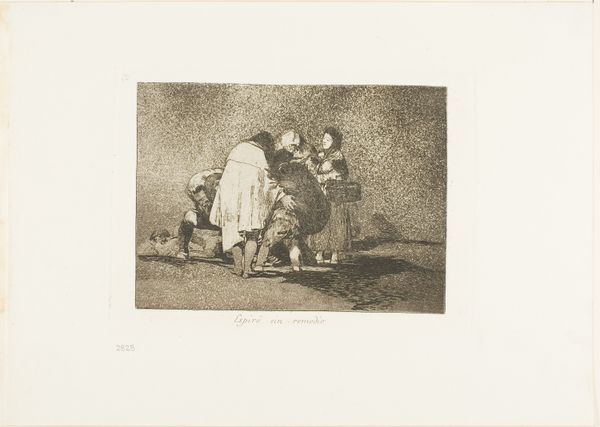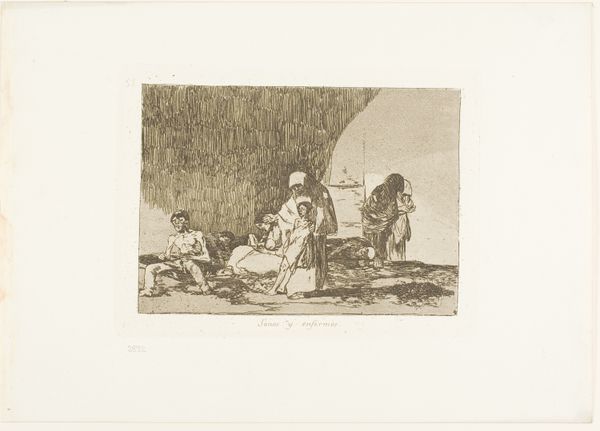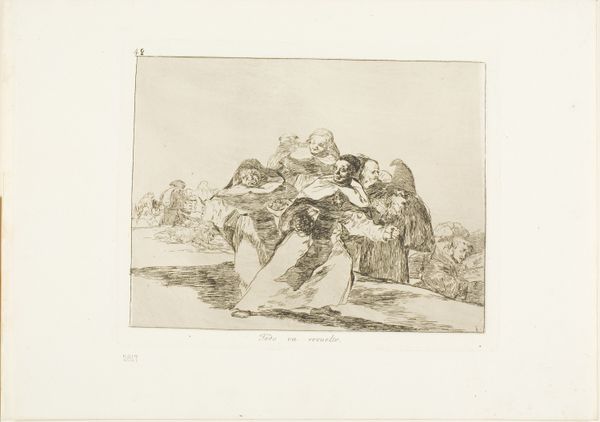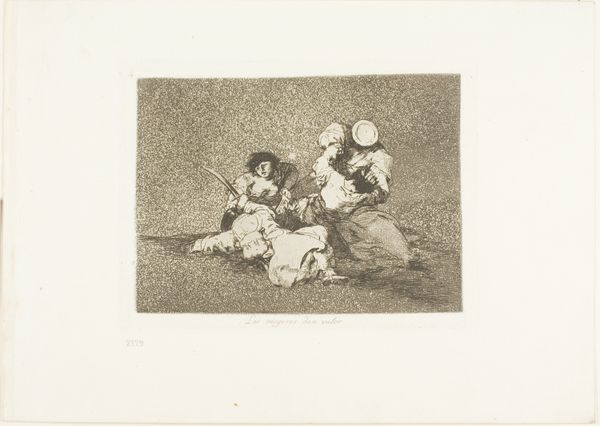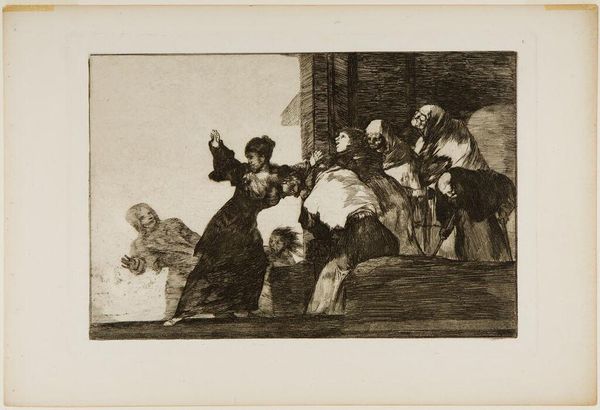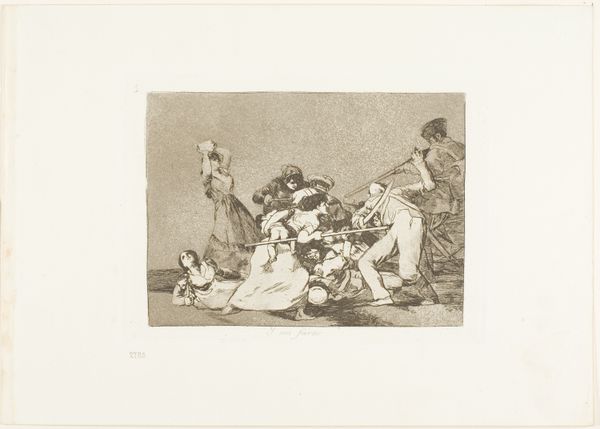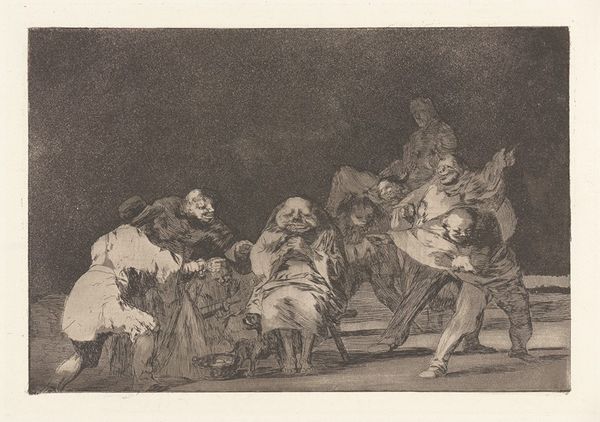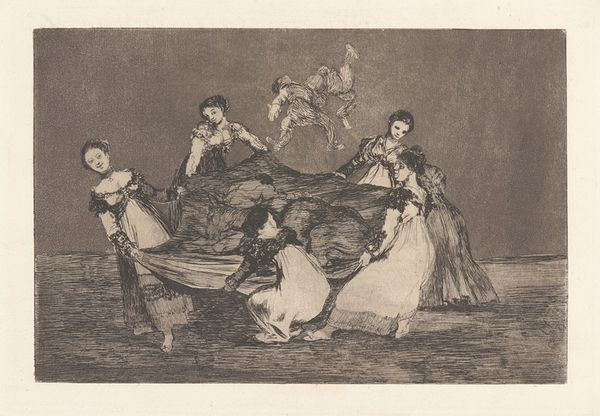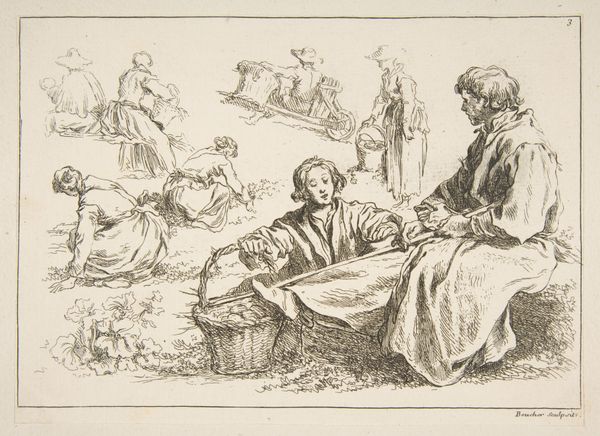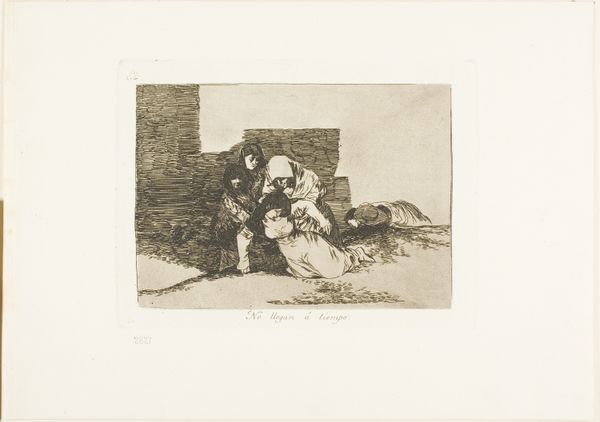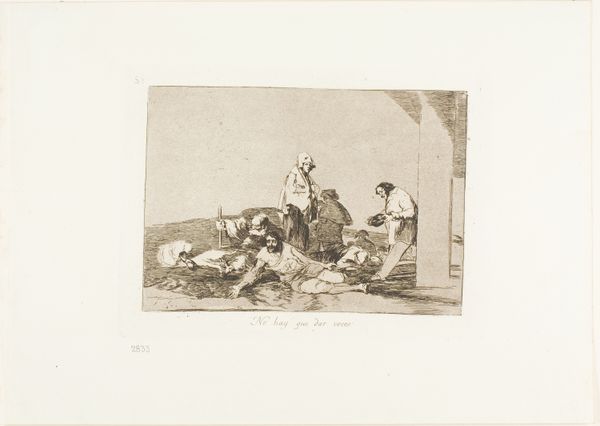
print, etching, engraving
#
portrait
#
narrative-art
# print
#
etching
#
figuration
#
romanticism
#
history-painting
#
engraving
Dimensions: 155 mm (height) x 204 mm (width) (plademaal), 130 mm (height) x 180 mm (width) (billedmaal)
This print by Francisco de Goya, is made using etching and aquatint. These are both intaglio processes, meaning that the image is incised into a metal plate, which is then inked and pressed onto paper. The aquatint gives Goya’s image its tonal range and depth, the fineness of the etched lines adding stark detail and structure. This is not art for art's sake, but rather art as social commentary, and Goya here uses the print medium to great effect. His chosen techniques allowed him to create multiple impressions and disseminate his work widely, to convey powerful messages about the human condition. The bleak depiction of poverty and desperation, as suggested by the work's title, "The worst thing is to beg," reflects the political and social turmoil of the late 18th and early 19th centuries in Spain. Goya’s mastery of materials and processes underscores the importance of craft in conveying profound social and political meaning.
Comments
No comments
Be the first to comment and join the conversation on the ultimate creative platform.
